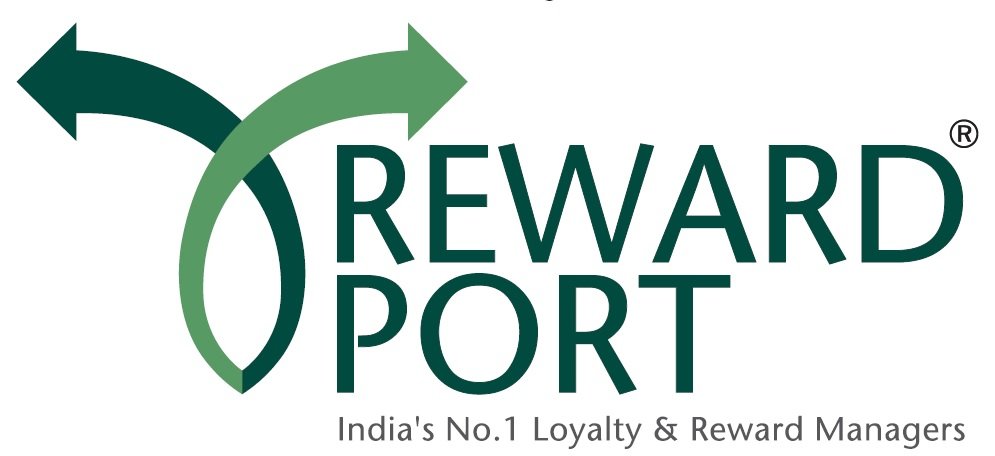Shocking Truth: 78% of Indian companies are measuring their loyalty programs wrong—and it’s costing them millions.
Here’s what happened when Mumbai-based fashion retailer FashionForward realized they were tracking vanity metrics instead of real business impact. After three years of running what they thought was a “successful” loyalty program with 2.3 million members, they discovered a startling truth: their most loyal customers were actually their least profitable ones.
The wake-up call came during a board meeting when the CFO asked a simple question: “If our loyalty program is so successful, why aren’t our profits growing?” That question led to a complete analytics overhaul that revealed their program was rewarding low-margin, high-maintenance customers while ignoring their true profit drivers.
Six months later, after implementing the right measurement framework, FashionForward increased program ROI by 340% and discovered that their real loyalty champions were an entirely different customer segment they’d been neglecting.
This story isn’t unique. Across India, thousands of companies are flying blind with their loyalty programs, celebrating meaningless metrics while missing the data points that actually predict business success.
The Great Loyalty Measurement Deception
The Problem Nobody Talks About
Walk into any marketing meeting in India, and you’ll hear the same loyalty program “success” metrics being celebrated:
- “We have 5 million members!”
- “Enrollment is up 45%!”
- “Engagement increased 23%!”
These numbers sound impressive, but they’re fundamentally flawed. They measure activity, not value. They count bodies, not business impact. They track participation, not profitability.
Why Traditional Metrics Fail
The loyalty measurement crisis stems from a fundamental misunderstanding of what loyalty programs should achieve. Most Indian businesses inherited Western measurement frameworks designed for different market conditions, consumer behaviors, and business models.
Indian consumers behave differently. They join multiple programs, cherry-pick benefits, and view loyalty rewards as entitlements rather than privileges. Traditional metrics don’t capture these nuances, leading to programs that look successful on paper but fail to drive real business results.
The Real Cost of Wrong Metrics
Companies relying on vanity metrics make devastating decisions:
- Investing in acquiring worthless members
- Rewarding customers who would buy anyway
- Ignoring profitable segments that don’t fit traditional loyalty models
- Optimizing for metrics that have zero correlation with business growth
The 12 KPIs That Actually Matter
Tier 1: Revenue Impact Metrics
1. Incremental Revenue per Member What it measures: Additional revenue generated specifically because of loyalty program participation Why it matters: This separates the revenue you would have earned anyway from the revenue your program actually creates Indian benchmark: Top programs generate 15-25% incremental revenue per active member Calculation: (Member lifetime value – Non-member lifetime value) × Active member count
2. Revenue Quality Score What it measures: The profitability and sustainability of loyalty-driven revenue Why it matters: Not all revenue is created equal—some costs more to generate and maintain Key insight: Programs driving 40%+ high-margin product sales consistently outperform those focused on volume Calculation: (High-margin revenue ÷ Total loyalty revenue) × Repeat purchase rate
3. Program ROI Velocity What it measures: How quickly your loyalty investments generate returns Why it matters: Cash flow and investment efficiency determine program sustainability Success indicator: Best Indian programs achieve positive ROI within 180 days Calculation: (Cumulative program benefits – Program costs) ÷ Days since investment
Tier 2: Behavioral Transformation Metrics
4. Purchase Frequency Acceleration What it measures: How much more often members buy compared to their pre-enrollment behavior Indian reality check: Programs increasing purchase frequency by 35%+ show sustainable loyalty Critical insight: Frequency matters more than transaction size in Indian markets Calculation: (Post-enrollment purchase frequency – Pre-enrollment frequency) ÷ Pre-enrollment frequency
5. Category Expansion Index What it measures: How effectively the program drives customers to try new products/services Why it’s crucial: Cross-selling and category expansion create defensive moats against competition Success threshold: 40%+ of active members should try new categories within 12 months Calculation: Members purchasing new categories ÷ Total active members × 100
6. Retention Resilience Factor What it measures: How loyalty program members weather competitive pressure and market challenges Why it’s powerful: True loyalty shows during difficult periods, not just good times Indian benchmark: Top programs retain 25-40% more customers during competitive promotions Calculation: (Member retention during stress periods) ÷ (Non-member retention during same periods)
Tier 3: Engagement Quality Metrics
7. Active Engagement Depth What it measures: The quality and breadth of member interactions beyond just purchases Why depth matters: Shallow engagement predicts churn; deep engagement predicts advocacy Success indicators: Multi-channel engagement, user-generated content, referral behavior Calculation: (Sum of weighted engagement actions) ÷ (Total possible engagement opportunities)
8. Emotional Connection Score What it measures: The strength of emotional attachment members feel toward your brand Critical insight: Emotional connection drives 60% more spending than rational loyalty Measurement approach: Net Promoter Score + willingness to recommend + brand preference strength Calculation: NPS score + (Referral rate × 10) + (Brand preference ranking ÷ competitors)
9. Social Amplification Rate What it measures: How often members voluntarily share, recommend, or advocate for your brand Indian significance: Word-of-mouth influences 80% of Indian purchase decisions Success benchmark: 25%+ of active members should generate organic advocacy annually Calculation: Members creating brand content or referrals ÷ Total active members × 100
Tier 4: Predictive Intelligence Metrics
10. Churn Prediction Accuracy What it measures: Your ability to identify at-risk members before they leave Business impact: Early intervention can save 40-60% of at-risk high-value members Success standard: 75%+ accuracy in predicting churn 90 days in advance Calculation: Correctly predicted churns ÷ Total predicted churns × 100
11. Lifetime Value Trajectory What it measures: Whether member value is accelerating, stable, or declining over time Strategic importance: Identifies program sustainability and optimization opportunities Warning signals: Declining LTV growth rates, negative value acceleration Calculation: (Month 12 LTV – Month 6 LTV) ÷ (Month 6 LTV – Month 1 LTV)
12. Competitive Immunity Index What it measures: How resistant your loyal members are to competitive offers and market changes Ultimate test: True loyalty withstands competitive pressure and economic uncertainty Indian context: With 90+ loyalty programs per category, immunity is crucial for survival Calculation: (Members retained during competitive campaigns) ÷ (Members exposed to competitive offers) × 100
The Indian Loyalty Analytics Advantage
Cultural Adaptation Insights
Indian loyalty analytics must account for unique cultural factors that Western frameworks miss:
Family Decision Dynamics: Purchasing decisions often involve multiple family members, requiring household-level analytics rather than individual tracking.
Festival Impact Patterns: Seasonal variations in Indian markets are extreme, requiring time-series analysis that accounts for religious and cultural celebrations.
Regional Behavioral Differences: North, South, East, and West India show dramatically different loyalty patterns requiring region-specific benchmarks.
Economic Sensitivity: Indian consumers show higher price sensitivity and deal-seeking behavior, requiring metrics that separate loyalty from promotion-chasing.
Technology Infrastructure for Advanced Analytics
Real-Time Analytics Platforms
Modern loyalty analytics require infrastructure capable of processing millions of interactions daily while providing instant insights for program optimization.
Essential capabilities:
- Multi-channel data integration (online, offline, mobile, social)
- Real-time cohort analysis and member journey tracking
- Predictive modeling with machine learning integration
- Automated alert systems for performance anomalies
AI-Powered Insights Engine
Machine learning algorithms can identify patterns humans miss, predict member behavior, and optimize program performance automatically.
Advanced features:
- Behavioral clustering and micro-segmentation
- Personalized engagement optimization
- Dynamic reward optimization based on individual preferences
- Automated A/B testing for program elements
Case Study: The Analytics Transformation
The Challenge A leading Indian telecom company with 45 million loyalty program members was struggling with program profitability despite high engagement metrics.
The Problem They were measuring:
- Member acquisition rate (growing)
- Points redemption volume (increasing)
- Program engagement frequency (high)
- Customer satisfaction scores (positive)
But missing:
- Revenue incrementality (negative)
- Profit contribution (declining)
- Member quality (deteriorating)
- Competitive retention (weak)
The Solution Implemented comprehensive analytics framework tracking all 12 KPIs with AI-powered insights engine.
The Results (12 months later):
- Program ROI: Increased from -15% to +67%
- Member Quality: 40% improvement in average member value
- Retention Efficiency: 156% improvement in retention cost-effectiveness
- Competitive Immunity: 78% of members resistant to competitive offers
- Revenue Impact: ₹2,340 crores in incremental revenue directly attributed to program
Key Success Factors:
- Focused on business impact metrics instead of activity metrics
- Implemented predictive analytics for proactive member management
- Created regional and cultural adaptation in measurement frameworks
- Established real-time optimization based on performance insights
Implementation Roadmap
Phase 1: Foundation (Months 1-2)
- Audit current measurement systems and identify gaps
- Establish baseline performance across all 12 KPIs
- Implement necessary technology infrastructure
- Train teams on new analytics frameworks
Phase 2: Intelligence (Months 3-4)
- Deploy predictive analytics and machine learning models
- Establish automated reporting and alert systems
- Begin member segmentation based on value metrics
- Create regional and cultural adaptation frameworks
Phase 3: Optimization (Months 5-6)
- Implement real-time program optimization
- Launch predictive intervention campaigns
- Establish competitive monitoring systems
- Create continuous improvement processes
Phase 4: Mastery (Months 7-12)
- Achieve predictive accuracy targets across all KPIs
- Establish industry-leading measurement capabilities
- Create sustainable competitive advantages through analytics
- Scale successful approaches across all business units
The Future of Loyalty Analytics
Emerging Trends Shaping Indian Markets
Blockchain Analytics: Transparent, tamper-proof loyalty data creating new levels of member trust and program accountability.
Voice Analytics Integration: Understanding loyalty through voice interactions, sentiment analysis, and conversational commerce patterns.
IoT Behavioral Tracking: Smart device data providing unprecedented insights into actual product usage and satisfaction.
Social Sentiment Integration: Real-time monitoring of social media sentiment to predict loyalty trends and member satisfaction.
Conclusion: Measuring What Matters
The difference between loyalty program success and failure isn’t what you measure—it’s whether you measure what actually drives business results. Indian companies that master these 12 KPIs will build sustainable competitive advantages while those stuck on vanity metrics will continue burning money on programs that look good but deliver nothing.
The loyalty analytics revolution is here. The question isn’t whether to join it—the question is whether you’ll lead it or be left behind by competitors who understand that in loyalty programs, as in life, what gets measured gets optimized, and what gets optimized drives real business success.
Ready to revolutionize your loyalty program measurement? RewardPort’s advanced analytics platform tracks all 12 critical KPIs while providing AI-powered insights that drive real business results. Discover what your loyalty program is actually delivering—and how to make it deliver more.


